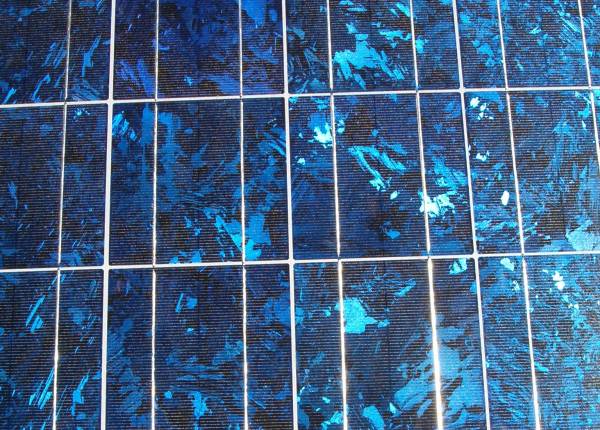Another attraction at the fair was the vendor’s tent where we talked to Bob from Sol Systems, a local solar electricity contractor (website currently broken). Somewhere down the line, I’d love to install photovoltaic panels all over the garage roof and get free electricity. The problem is that the panels and all the other electrical hardware can run upwards of $24,000 for a house the size of ours. With monthly electric bills between $100 and $150, it will take a long time before the electricity is really free.
However, since the electric company burns oil and naphtha on Kauai to produce electricity, our rates will probably go up unless the utility increases its proportion of renewable energy sources. The sad part is that the price of solar panels is going up as demand increases faster than supply.
The type of system we would get is called grid-tied. This means that there are no batteries and you sell electricity to the grid during the day and buy oil-generated electricity at night. Such systems have become much more common recently, because the electronics to do so have become more available. This is good for the electric company because it helps reduce the peak generating capacity they need during the day due to air conditioning and business activity. Hawaii state law mandates that the companies purchase home-produced power, although they do not pay you beyond what you use. You can reduce your electric bill to zero on a monthly basis, but you can’t get carry-over credit or any money back.

I was interested to read the following article in the montly California Farm Bureau magazine: http://www.cfbf.com/CCMag2/2005/2005_5_3.cfm, talking about the same type of grid-tied solar energy.
Who’d think that mega-agribusiness would be on the cutting edge of installing solar systems like this?
Agribusiness and solar farming seem very complimentary: lots of space for the panels, seasonal usage, and low cosumption. To them it’s just another crop on the land, one with high investment, zero maintenance, and big subsidies. I think if I got a 50% rebate and annualized generation credit, I could pay for my system in 5 years.
The peak here on Kauai is driven by residential hot water consumption, not A/C. Grid tied PV systems are not particularly good for this utility or others. PV doesn’t help the Kauai peak , beacuse it happens in the late evening, after the sun goes down and electricty is being purchased. Grid tied systems also allow for an in equitable alocation of utility fixed costs.
“Joe” has an interesting point about peak demand. I thought all the sealed buildings running A/C in the hot sun would be peak. But given the temperatures aren’t too high and the breezes blow, I could believe that when everybody gets home and uses hot water, it creates a bigger peak when all the hot water heaters turn on. Does the electricity co-op publish these numbers, if not they should.
Given how well solar hot water works on Kauai, you’d think there would be more effort by the co-op to reduce that peak. They do have a solar hot water incentive program, but they only contract with the most expensive installers, so I can see why it’s not very successful. I wonder if there are electric water tanks that delay turning on by 0-2 hours to avoid this peak effect–it wouldn’t even be noticeable for big tanks.
As for the grid-tied PV issues, I know it’s a problem for the utility to handle all the uncontrolled input. It seems like this is one of those cases where the early adopters have all the benefit, but real problems will surface if more and more people are grid-tied. However, I see that as a problem that is nice to have (too much PV generation out of peak), one that is solvable, for example by pushing the solar hot water. And yes, to be realistic, grid-tied customers should sell their output at a certain percentage of the KWH rate, or perhaps pay a flat monthly fee to cover hookup and fixed costs.
By the way, I haven’t installed PV yet, and probably won’t soon–the up-front cost is just too high. It looks like residential wind power might work on Kauai too, with a lower entry cost. But the tower and noice of windmill are more of an issue with neighbors, and it does have the same problem when tied to the grid.